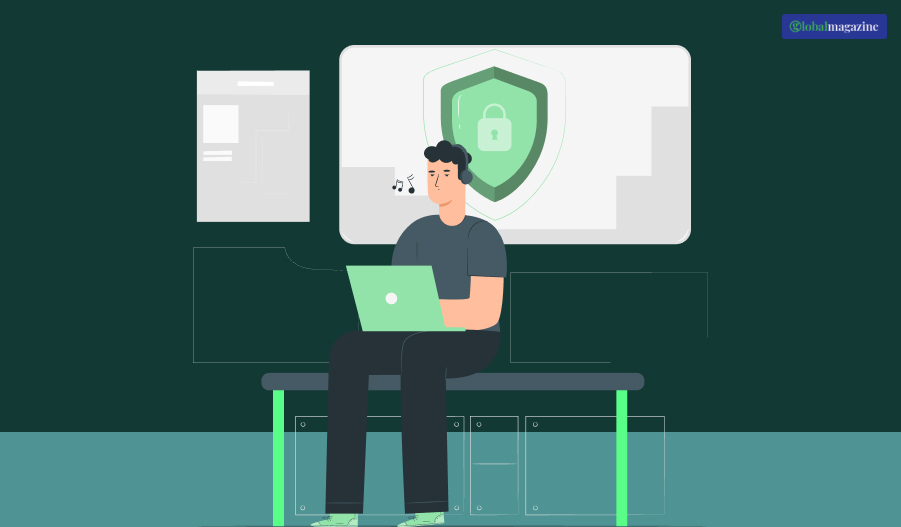How Digital Access Impacts Various Areas of Cybersecurity: A Deep Dive

In the digital age, access to technology is nearly ubiquitous—but with this accessibility comes an evolving landscape of cybersecurity challenges.
Digital access, referring to the ability of individuals, devices, and organizations to connect to and use digital resources, has revolutionized nearly every aspect of society.
However, it also directly influences multiple facets of cybersecurity—ranging from data protection and threat exposure to identity management and governance.
This article provides an in-depth analysis of how digital access shapes, disrupts, and informs cybersecurity strategies in a connected world.
It examines the interplay between accessibility and vulnerability, identifying both the benefits and the threats that arise from broadening digital access.
Defining Digital Access in a Cybersecurity Context

Digital access encompasses the availability and ability of users and devices to connect to digital systems such as:
- Internet and web-based services
- Cloud platforms
- Enterprise networks
- IoT ecosystems
- Remote work and hybrid IT infrastructures
In cybersecurity, digital access refers not just to the ability to reach a system, but also the manner, level, and control of that access. This includes:
- Authentication and authorization mechanisms
- Device and network access controls
- User provisioning and deprovisioning
- Endpoint security and visibility
The expansion of digital access leads to increased attack surfaces—the more entry points, the more opportunities for unauthorized access.
The Core Areas of Cybersecurity Impacted by Digital Access
The core areas where cybersecurity is impacted by digital access are mentioned below.
A. Identity and Access Management (IAM)
IAM is arguably the most directly impacted area. With greater digital access:
- Users need robust authentication methods (e.g., MFA, biometrics)
- Access control must be granular, often role-based (RBAC) or attribute-based (ABAC)
- Federated identity systems become essential in enterprise settings
Key IAM Challenges:
- Account sprawl: Users with multiple accounts across services
- Credential theft via phishing and brute-force attacks
- Inadequate privilege management (leading to privilege escalation)
Digital access without secure IAM is a critical vulnerability.
B. Network Security
With the rise of remote work, mobile access, and cloud services, traditional network perimeters have eroded. Digital access redefines network security from a castle-and-moat model to a zero-trust architecture.
Influences of Digital Access:
- Greater need for VPNs, SD-WAN, and secure tunneling
- Explosion of BYOD (Bring Your Own Device) challenges
- Segmented networks to isolate systems based on risk and role
Digital access has driven network security toward adaptive, identity-aware defenses.
C. Endpoint Security
Every device granted digital access—laptop, smartphone, printer, or smart home appliance—can act as an endpoint and potential vulnerability.
Digital Access Complications:
- Increased endpoint diversity (Windows, Linux, Android, iOS)
- Remote endpoints outside corporate firewalls
- Unpatched or unmanaged devices connecting to secure networks
Solutions include:
- Endpoint Detection and Response (EDR)
- Mobile Device Management (MDM)
- Patch management and policy enforcement tools
Digital access expands the endpoint landscape, demanding robust and scalable protections.
D. Data Protection and Privacy
With broader digital access, data is more mobile—moving across systems, devices, networks, and geographic regions. This creates profound challenges around:
- Data loss prevention (DLP)
- Encryption at rest and in transit
- Privacy law compliance (e.g., GDPR, CCPA)
- Cloud data exposure
Unauthorized access or poor access hygiene can lead to:
- Insider threats (intentional or accidental)
- Data exfiltration via insecure channels
- Violations of user consent and data minimization principles
Access policies must be tied directly to data classification and sensitivity.
E. Cloud Security
Cloud services are the epitome of expanded digital access—allowing users to access resources anytime, from anywhere.
Key concerns include:
- Misconfigured cloud storage (e.g., public S3 buckets)
- Excessive permissions in IaaS/PaaS environments
- API security and abuse
- Shadow IT usage of unauthorized SaaS platforms
To mitigate these:
- Use Cloud Access Security Brokers (CASBs)
- Enforce least privilege models
- Continuously monitor access logs and anomalies
Cloud democratizes access—but demands cloud-native security governance.
F. Application Security
Applications—both web and mobile—are primary access points. Digital access increases application exposure to:
- SQL injection
- Cross-site scripting (XSS)
- Cross-site request forgery (CSRF)
- Session hijacking
Authentication layers in applications must handle:
- OAuth and OpenID Connect
- Passwordless logins
- Social logins and federated SSO
Poorly secured application interfaces are frequent breach points in a high-access environment.
G. Physical and Social Engineering Risks
More digital access means more human interaction with systems, which increases susceptibility to social engineering.
Key attack vectors:
- Phishing
- Vishing (voice phishing)
- Tailgating and badge cloning
- USB baiting
Digital access also introduces hybrid risks—such as a remote user clicking a phishing link that compromises their entire corporate session via VPN.
Human factors become even more critical when digital access is widespread.
Positive Impacts of Digital Access on Cybersecurity

While digital access expands the attack surface, it also enhances cybersecurity capabilities:
A. Real-Time Threat Intelligence Sharing
- Security analysts worldwide can collaborate instantly
- Threat indicators (IOCs, TTPs) are shared via global platforms
B. Distributed Security Operations
- SOC teams can function globally with cloud-based SIEMs
- Incident response can be performed remotely
C. Broader Security Awareness
- More users connected = more opportunities for education
- Digital onboarding includes mandatory security training
D. Security Automation and AI
- AI-based security tools benefit from large, distributed datasets
- Endpoint telemetry from widely accessed systems improves ML threat detection
Challenges and Threats Introduced by Digital Access
Despite the benefits, digital access introduces unique and complex cybersecurity threats:
| Threat Type | Description |
| Shadow IT | Unauthorized digital services used without IT approval |
| Access Creep | Gradual privilege accumulation over time |
| Zombie Accounts | Unused accounts that still retain access rights |
| Insider Threats | Authorized users misusing access |
| Access Broker Marketplaces | Criminals selling valid credentials on the dark web |
Risk Amplification:
- The more access you provide, the more attack vectors attackers can exploit.
- Each digital connection (user or device) becomes a node for potential reconnaissance, lateral movement, or persistence.
Access Governance and Policy Enforcement

As digital access becomes pervasive, governance must evolve. This includes:
A. Role-Based and Attribute-Based Access Control
Enforcing access policies based on job roles, locations, devices, and time.
B. Just-In-Time (JIT) Access
Temporary access granted only when needed, then revoked.
C. Continuous Authentication
Behavioral biometrics and risk scoring determine ongoing session legitimacy.
D. Auditing and Monitoring
Logging all access attempts, failed authentications, and anomalies.
E. Zero Trust Architecture
Trust no device or user by default—even if inside the perimeter.
Future Trends: Where Digital Access Meets Cybersecurity
Here are a few future trends where digital access is going to meet cybersecurity.
A. Passwordless Authentication
Biometrics, passkeys, and hardware tokens will reduce password fatigue and credential theft.
B. Identity Fabric and Decentralized Identity (DID)
Users control their own identity claims, reducing centralized risk.
C. AI-Based Adaptive Access
Systems adjust access levels dynamically based on user behavior, time of day, geolocation, etc.
D. 5G and IoT Proliferation
With billions of connected devices, securing digital access to each becomes paramount.
E. Regulatory Expansion
New regulations (e.g., NIS2, Digital Operational Resilience Act) will mandate stricter access controls.
Accessing Digital Impact!
Digital access is both a double-edged sword and the lifeblood of the modern digital ecosystem. It enables seamless productivity, remote work, and innovation—but simultaneously creates a sprawling attack surface that must be vigilantly defended.
Cybersecurity professionals must understand that every instance of access is a potential vulnerability.
As access increases, so too must controls, visibility, and governance mechanisms. From IAM to cloud security, from endpoint protection to data privacy, every domain of cybersecurity is intricately tied to how, when, and by whom access is granted and used.
The challenge for the future isn’t whether we allow digital access—but how we manage it without compromising security.
























